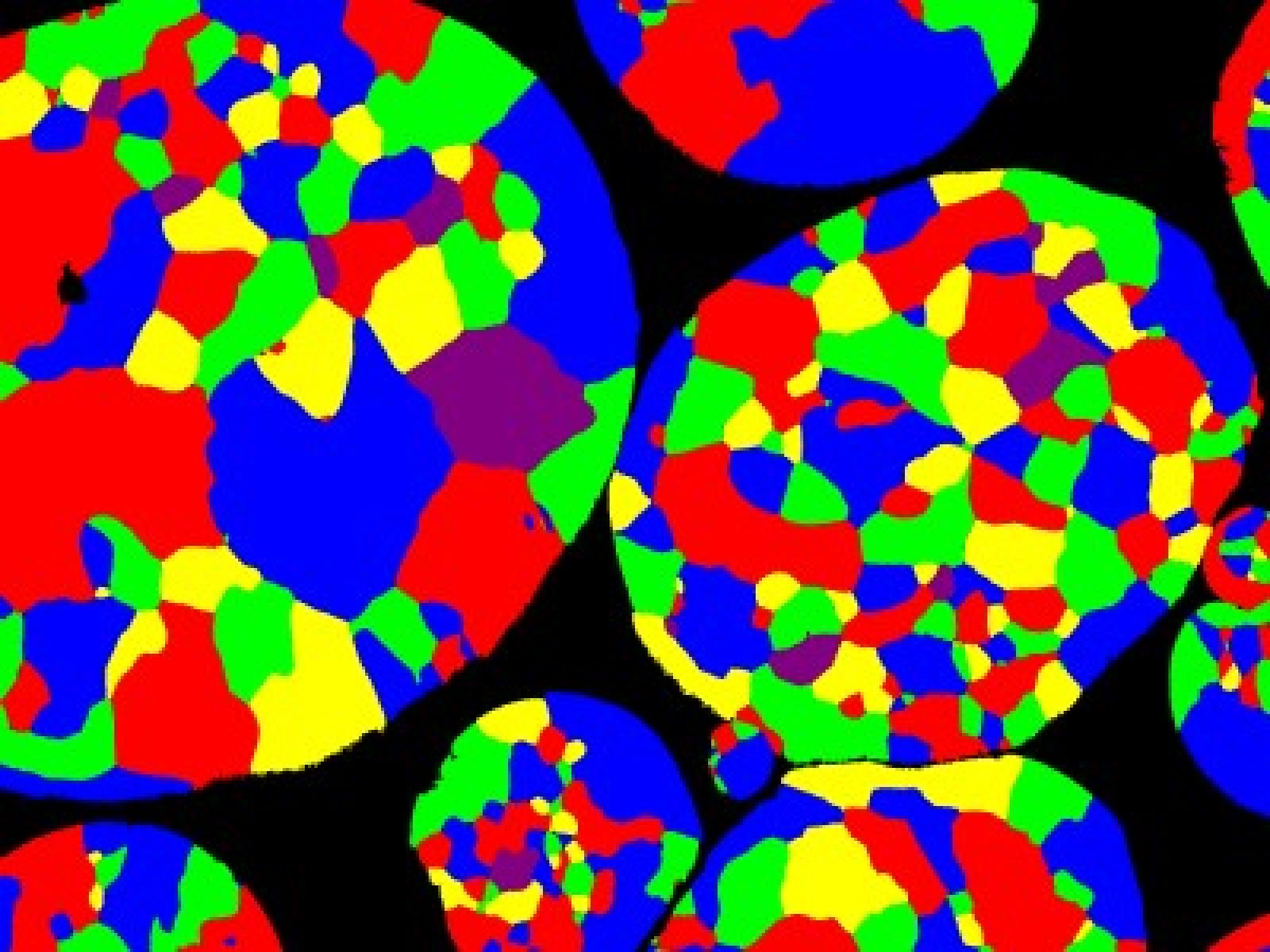No Ball Milling Needed: Alternative Oxide Dispersion-Strengthened Steel Manufacturing
Combining advanced powder synthesis with solid state processing allows for streamlined oxide dispersion-strengthened steel fabrication

Research demonstrates proof-of-concept for a new processing method for creating oxide dispersion-strengthened steel.
(Image courtesy of Dalong Zhang | Pacific Northwest National Laboratory)
The Science
Traditionally, oxide dispersion-strengthened (ODS) steel is made via time- and energy-intensive processing methods. The methods are challenging to scale up and producing enough ODS steel for industrial applications remains difficult. Researchers combined advanced powder synthesis techniques with solid phase processing methods. They were able to create high-quality ODS steel without any prolonged ball milling or conventional canning, degassing, and consolidation steps. The new processing method generated steel with a comparable amount of key oxide particles as traditional processing.
The Impact
Future fusion energy systems will require large quantities of strong materials resistant to degradation under extreme conditions. ODS steel is a top candidate for use in these types of applications. However, current processing methods are expensive, time-consuming, and impractical to scale. This research demonstrates proof-of-concept for a new processing method for creating ODS steel. This new method produces ODS steel with comparable microscopic properties to traditional methods, but with a substantially streamlined process amenable for scaling up.
Summary
Developing future fusion energy systems requires developing materials sturdy enough to maintain performance under the extreme conditions present during nuclear fusion processes. ODS steel is a likely candidate for fusion energy applications but is currently challenging to efficiently fabricate. Traditional methods require prolonged ball milling and conventional canning, degassing, and consolidation steps that are time-consuming and energy-intensive. New research used advanced powder synthesis techniques to generate feedstock powder for ODS steel production. When added to a friction processing apparatus, scientists were able to generate hard, bulk ODS steel within one minute. At a microscopic level, the ODS steel had a refined structure distinct from the starting powder. Differences in structure could be observed based on the level of processing of the material. The friction processed ODS steel had a similar amount of nanoscale oxide particles to conventionally processed ODS steel, indicating a similarly high quality. This new method should be substantially more amenable to scale up processes.
PNNL Contact
Dalong Zhang, Pacific Northwest National Laboratory, dalong.zhang@pnnl.gov
Maria Sushko, Pacific Northwest National Laboratory, maria.sushko@pnnl.gov
Funding
The authors acknowledge funding support from ARPA-E GAMOW program with award number 20/CJ000/09/03, “Microstructure Optimization and Novel Processing Development of ODS Steels for Fusion Environments.” D.Z., J.W., D.J.E., W.S., and G.R.O. are also supported by U.S. Department of Energy, Office of Fusion Energy Sciences, under contracts DE-AC06-76RLO1830 and DE-FG03-94ER54275. Portions of the preliminary data on the GARS powder used in this study were generated with support from the Department of Energy, Office of Fossil Energy through Ames Laboratory contract no. DE-AC02-07CH11358, and this funding also is gratefully acknowledged.
Published: May 11, 2022
D. Zhang, J.T. Darsell, J. Wang, X. Ma, G.J. Grant, I.E. Anderson, J.R. Rieken, D.J. Edwards, W. Setyawan, T.J. Horn, and G.R. Odette. “No ball milling needed: Alternative ODS steel manufacturing with gas atomization reaction synthesis (GARS) and friction-based processing,” Journal of Nuclear Materials, 153768, (2022). [DOI: 10.1016/j.jnucmat.2022.153768]